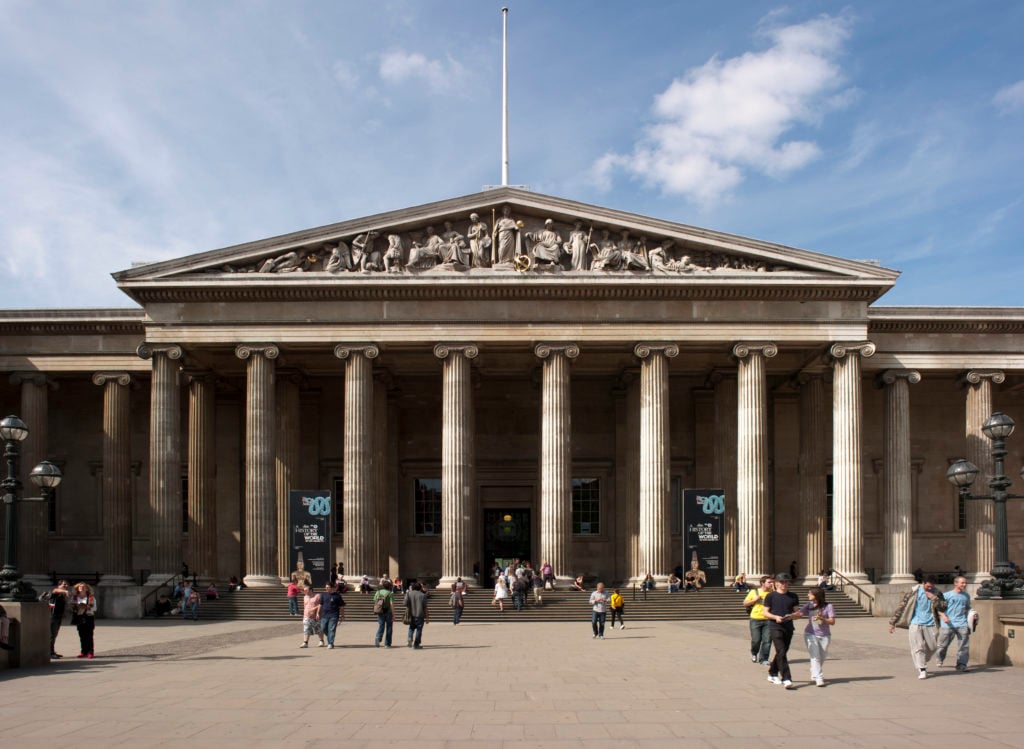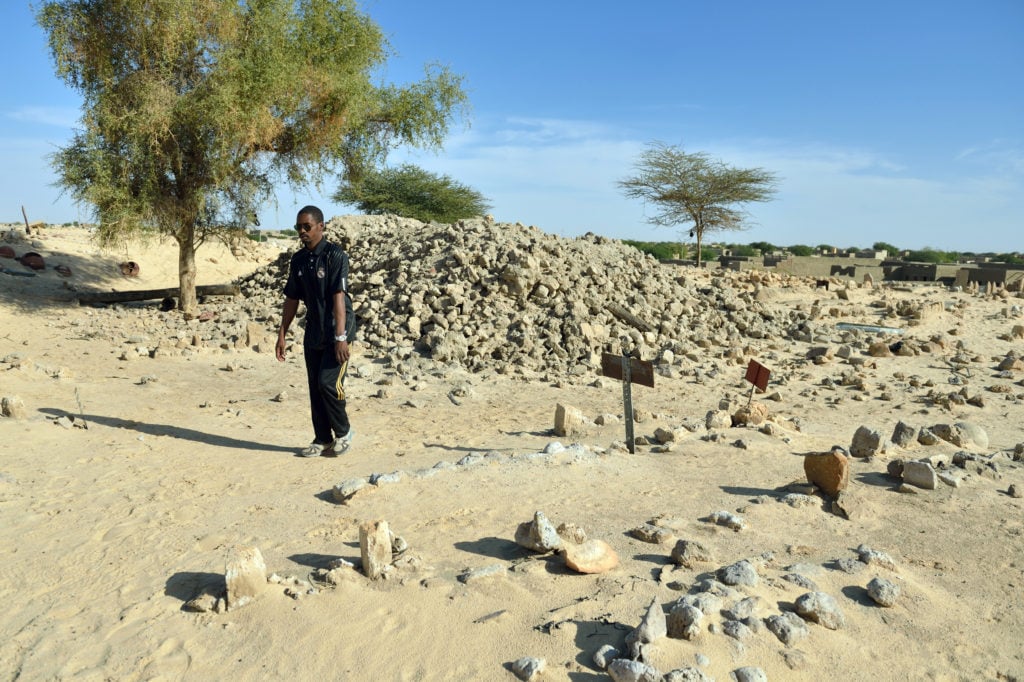https://news.artnet.com/art-world/british-museum-will-become-global-watchdog-fight-trade-stolen-egyptian-antiquities-1441918
Art and Law
Looters Beware: The British Museum Is Leading an International Task Force Fighting the Illicit Trade in Egyptian Antiquities
An expert team and powerful new database will help recover stolen artifacts and expose fake documentation.

The British Museum is taking on a new role: international watchdog for the trade of Egyptian and Nubian artifacts. The museum is employing a team of curators solely dedicated to spotting looted ancient treasure—a move that will have far-reaching implications for collectors, dealers, and other museums.
The London-based team of experts is leading an international task force monitoring the trade in antiquities from Egypt and Sudan. Some items may have been recently looted or stolen and therefore never reported missing; others could have been sold decades ago with fake provenances to unwitting collectors—and even other museums.
Using their expert knowledge of archaeology, a sophisticated new database, and plenty of detective work, the dedicated team at the British Museum is working closely with colleagues in Cairo and Khartoum to identify problematic objects and expose fictitious provenances. They are also looking for works currently on offer at auction houses, galleries, and on websites such as eBay set off alarm bells. If there is evidence that could lead to an object's recovery and repatriation, the British Museum reports the information to law enforcement agencies, including Scotland Yard and US Customs.

A man walks on January 29, 2013 in the ruins of the Sidi Mahmoud mausoleum, which was destroyed by Islamists in July, in a cemetery of Timbuktu. (Photo: ERIC FEFERBERG/AFP/Getty Images)
"Laxity, Misconduct, or Obfuscation"
The project's innocuous name, "Circulating Artefacts," belies its far-reaching implications for the trade, collectors, and institutions. The task force's creator says the initiative aims to disrupt the flow of illicitly traded artifacts that has, until now, gone largely unreported.
The database will be built out with antiquities that are legal, illegal, and those that have unknown status, enabling new items to be cross-referenced. The team is already aware of more than 500 looted artifacts that have left Egypt and Sudan recently.
The project begins in earnest next month, when the first version of the database will be ready. The UK government's Cultural Protection Fund has provided initial funding of f £1 million ($1.3 million) over the next two years.
The project is the brainchild of Marcel Marée, a curator in the British Museum's department of ancient Egypt and Sudan. Speaking ahead of a trip to Cairo, he told artnet News: "We have become alarmed at widespread practices in the art market. The more you pay attention, the more you notice patterns of of laxity, misconduct or obfuscation." He estimates that there are tens of thousands of looted artifacts in collections and the marketplace that have yet to be identified. "Sales are constant," he said.

The Great Court at the British Museum. Image courtesy Wikimedia Commons.
Unrest since the Arab Spring, illegal construction, and a drop in security has led to a spike in looting in Egypt in particular, according to Marée. "They turn sites into lunar landscapes like the ones we have seen in Iraq and Syria," he said.
Scholars play a key role in the hunt for looted material. Unlike the police and customs agents, Egyptologists can spot if, for example, an inscription on a tablet or style of sculpture indicates it came from a looted site. Marée recalls identifying a statuette that he could trace back to a recently discovered site that was bulldozed by looters before archaeologists had the chance to excavate.
The database, which includes both images and provenance research, is not open to the public because the information it contains is legally sensitive. (The material could alert criminals and their accomplices to objects under suspicion before they can be recovered, for example.) But to encourage transparency, the site will list every auction house and dealer that submits artifacts for documentation and study. "Those who do not will be conspicuous by their absence," Marée said.
He anticipates the project will create "peer pressure" among dealers to cooperate while alerting "conscientious collectors about which dealers are less reliable." Meanwhile, museums may find that something in their collections is not properly documented. Marée said diplomatically that "some museums are better than others in their due diligence."
"Intentional Negligence"
Some who know first hand of the dark side of the trade are cheered by the new initiative. The British collector and museum founder Christian Levett said that some in the antiquities business have been negligent about provenance—"clearly often intentionally so, and that has enabled smuggling rather than prevented it." The loss is two-fold, he said: "to the source countries and to collectors many who now own thousands of largely worthless antiquities that cannot be resold."
Levett, who founded the Musée d'Art Classique de Mougins in France, has long called for an international database listing illicit antiquities. He says that running a museum has led him to discover that some dealers "have historically treated handling stolen goods and committing sales fraud as part of the antiquities business, rather than as a crime."
Noah Charney, an expert in lost and stolen art, also welcomes the British Museum's scheme. "It's something that various organizations have considered, but no one has had the budget for to date," he said. "Technology is such now that facial recognition software could be adapted to identify objects that are at risk."

Mummified cats at the British Museum, London. Photo: Mario Sánchez via Wikimedia Commons
He hopes that the British Museum will eventually expand the project beyond Egyptology. However, he is concerned that trafficked antiquities that have not been photographed, like those that have been recently excavated, might still fall through the cracks.
The Circulating Artefacts team hopes to create a database of around 80,000 artifacts that have been sold since the 1970 UNESCO Convention on the illicit trade of cultural heritage. The long-term goal is to include all artifacts sold "since the birth of Egyptology" in the early 19th century. "We can clarify lost history," Marée said.
The Circulating Artefacts team has already identified looted objects that are now scattered "all over the world," Marée said. "There is so much disparate data that needs to be brought together. But you need to start somewhere."
Follow artnet News on Faceb
-- Sent from my Linux system.
No comments:
Post a Comment